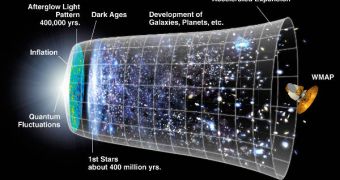The General Theory of Relativity, developed by the brilliant physicist Albert Einstein, has been at the forefront of modern physics, describing the way gravity, space and time interact. However, it does not account for the movement of elementary particle. The theory of quantum mechanics was devised around 1920, and explains all this, but without accounting for gravity. Therefore, uniting the two ideas has since been an effort taken on by a large number of physicists. Now, an international group believes it is closer than ever to finally managing a breakthrough.
Professors A.A. Coley, from the Dalhousie University, in Halifax, G.W. Gibbons at the University of Cambridge, in the UK, and C.N. Pope at the Texas A&M University, in the United States, led by young mathematician Sigbjørn Hervik, at the University of Stavanger, in Norway, believe that string theory is the best option physics has at bringing the two together. String theory, however, is thought to operate in 11 dimensions, of which we only know four (width, height, depth and time), ScienceDaily reports.
“String theory is based on vibrating objects called strings. The different fundamental vibrations give rise to different basic particles in the same way a guitar string vibrates to give the different tones. String theory operates with eleven dimensions, but we only know three of them in addition to time. The others are still unknown. String theory is therefore unverified and a lot is still missing before we can declare it the Theory of Everything. What we can do, however, is to consider the problem from another angle as if we did not know what the theory could be. We can describe phenomena, for example the universe, as a consequence of the unknown theory, in spite of the fact that we do not know what the exact theory is,” Hervik proposes.
“What we need are many so-called projection operators to describe the totality, and we have a systematic way of doing this. We are looking for projection operators. By performing projections we can determine the curvature independently of how you look at the universe. The idea is to construct curvature or projection operators that split geometry into small entities. It is a tool or a method based on mathematical formulas designed to find such operators,” he continues.
“This is obviously a long term project, but we can see the end of some parts of it in a few years time. We have the theory. But we need to discover its consequences and find areas of application,” the mathematician concludes. Many experts have tried using the string and superstring theories to unite quantum mechanics and general relativity, and have failed. It remains to be seen whether the new effort will succeed in this highly abstract field of research.

 14 DAY TRIAL //
14 DAY TRIAL //